Membury Airfield
My
interest | Aviation
Archaeology
| Ramsbury's
Home Front
| Ramsbury
Airfield | 101st
Airborne Division |
Mystery Corner
| 101st
Artillery
| The
Great War
Savernake
Ammo Dump | Normandy
- some places of interest
| Home
Page |
Links Page
| Obituaries
| Recommended
Reading
| Aldbourne
Stable Project
MEMBURY AT WAR - OUT NOW - price £11.95 plus p&p
Following years of research
author, Roger Day, has published his history of Membury Airfield.
For more information or to order copies please contact Roger at: roger@ramsburyatwar.com
For
up to the minute information please visit ![]()
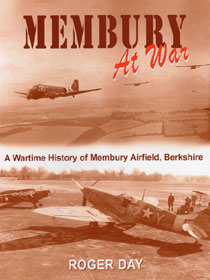
Located 6 miles north-east of Hungerford, Berkshire most of Membury airfield lies within the parish of Lambourn. However a small part of its south-western corner is in the Wiltshire parish of Ramsbury, as is the Membury Estate from where it gets its name.
The early history of Membury airfield is in many ways a mirror of Ramsbury's, as construction work began at about the same time (May 1941) and both were officially opened in August 1942. The main building contractor was Gee, Walker and Slater, usually abbreviated to GWS, which was said by many of the workforce to mean, get them, work them and sack them!
Spies in the Sky
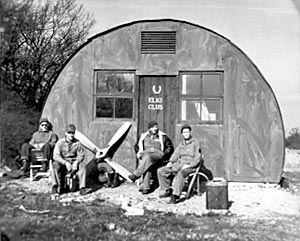
In early September 1942 the 3rd Photographic and 67th Observation Groups, both attached to the US 8th Air Force, moved in. The 3rd Photographic was at Membury for just six weeks before being reassigned to the US 12th Air Force and sent to Steeple Morden in Cambridgeshire. However the 67th was to remain at Membury for almost 16 months.
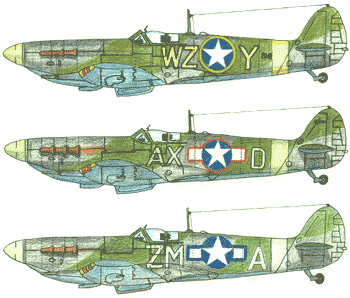
Top:
The 67th RG inherited the majority of its original
complement of Spitfires from the 3lst and 52nd Fighter Groups and this machine
(BM635) still carries markings of the 31st FG's 309th Squadron. Middle:
This Spitfire was built at Castle Bromwich in March 1942. It was issued,
via 'reverse lend-lease' (the supply of British aircraft and equipment to
American forces) to the 67th RG at Membury in June 1943. It's shown in l07th
Reconnaissance Squadron markings. The band around the rear of the fuselage
obscured the original aircraft serial number (BM181) which was repainted on
the fin in small figures. Bottom: Another 67th RG Spitfire,
this time in l2th Reconnaissance Squadron markings.
The groups mission whilst in the ETO (European Theatre of Operations) was photo reconnaissance work and in June 1943 their title was changed from 'Observation' to 'Reconnaissance' that better reflected this fact. Shortly after their arrival the 67th started to be equipped with Spitfire Mk Vbs, many of which had been left behind by the USAAF's 31st and 52nd Fighter Groups following their departure for North Africa. Other aircraft seen at Membury during this period were Tiger Moths, Havocs, Bostons and Piper L-4 Cubs. In December 1943, after being re-equipped with Mustangs, the group left Membury and went to Middle Wallop in Hampshire.

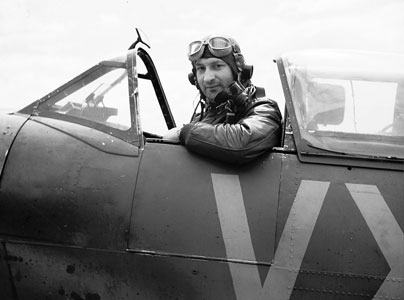
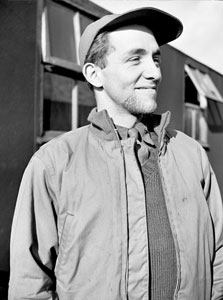
Above: During his time in England Major Joe Thompson (left) commanded the 67th Reconnaissance Group's 109th Tactical Reconnaissance Squadron. He was a prolific photographer and took some wonderful images whilst in England. Unfortunately he cannot remember the names of the Spitfire pilot (centre) or the man by the hut (right). CAN ANY READER IDENTIFY EITHER OF THESE GENTLEMEN? (All three pictures Joe Thompson via Tim Green)
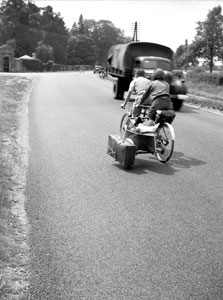
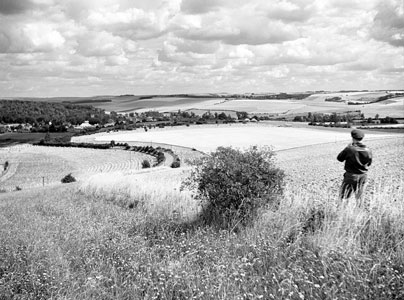
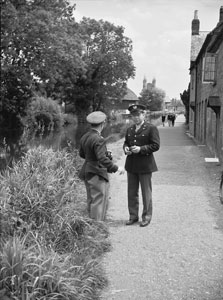
During
his limited spare time Joe enjoyed touring the local area and capturing what
he saw on film. Left: A tandem cycle, complete with side car
and suitcase, on the A4 near Benham Vallence. Centre: The Berkshire
village of Lambourn from Hungerford Hill. Right: The Kennet
and Avon canal at West Mills, Newbury.
(All three pictures Joe Thompson via Tim Green)
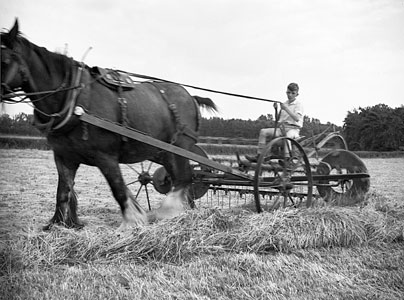

Above: Two wonderfully evocative shots of farming life in wartime England. I think the picture on the left was taken at Lambourn Woodlands. Can anybody identify the boy? (Both pictures Joe Thompson via Tim Green)
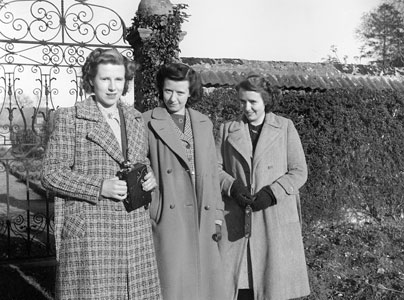
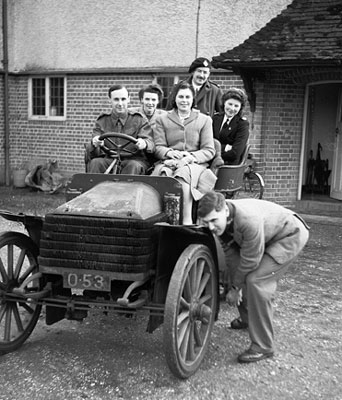
Two more
pictures taken by Joe Thompson. The ladies in the picture on the left have
been identified by Arabella Agar whose mother, Angela Barwick, is in the centre.
She is flanked by her sisters. Diana is on the left and Valerie on the right.
They are standing on the lawn in front of the gate leading into the walled
garden at Inholmes Estate, Woodlands St Mary, with the engine house in the
background.
The old car on the right was pictured in front of a house called Donnington
Hurst that's along the Wantage road leading out of Newbury. Mrs Winifred Vosper
is sitting next to the driver and her uncle Edwin 'Mac' McKenzie is in the
back wearing the beret. The lady second from left is Winifred's best friend,
Joan Giles. With thanks to Tim Green for allowing me to reprodce the pictures
and for providing the information. (Both pictures Joe Thompson via Tim Green)
6th Tactical Air Depot
During mid 1943 the south-eastern corner of the airfield was extended and additional workshops plus two temporary hangers were erected. By the end of the year the site had become home of the 6th Tactical Air Depot (TAD). This depot specialised in the checking and updating of newly arrived P-47 Thunderbolts before they were allocated to operational squadrons.
The US Ninth Air Force arrive
At the beginning of January 1944 the 366th Fighter Group arrived at Membury from the United States. They were soon equipped with P-47 fighters directly from the 6th TAD. The group spent the following weeks getting used to their new aircraft and the vagaries of the English weather, before moving on to Thruxton in Hampshire. Two days later, on 3rd March, the US 436th Troop Carrier Group arrived. The Group consisted of four squadrons (79th Sq. coded S6, 80th Sq. coded 7D, 81st Sq. coded U5 and the 82nd Sq. coded 3D) each equipped with about 14 C-47s. The next three months were spent training, often in conjunction with the 101st Airborne Division, in preparation for the forthcoming invasion of Europe. For several weeks prior to D-Day, briefings were held and plans made in readiness for the group's participation in the 'Neptune' phase of operation 'Overlord'. On the night of June 5th 1944 (D-Day minus 1), the group left Membury to take part in a pre-dawn paratroop drop near the town of Ste. Mere-Eglise in Normandy. The following evening the 436th dispatched a further 50 C-47s towing a simular number of gliders for Normandy. Both missions were completed without loss or serious damage to any powered aircraft.
The
85th TCS at Membury - 29th May 1944 to 6th June 1944.
The first D-Day mission
flown from Membury was part of operation 'Albany'. The 436th TCG was responsible
for transporting the 1st Battalion, 502nd Parachute Infantry Regiment and
the entire 377th Parachute Field Artillery Battalion. To help carry these
units an extra 18 aircraft and crews were required and these were supplied
by the 85th TCS based at nearby Ramsbury. The 85th Squadron joined the 436th
TCG on the 29th May 1944 on detached service. Don Bolce was a radio operator
with the 85th and recalls: "We had many dress rehearsals for D-Day
and we didn't know whether this was the 'real thing' or not. Before leaving
Ramsbury we were ordered to wear full battle gear, leggings and helmets and
to carry a side arm or .30 calibre carbine. I preferred to carry a .45 Colt
automatic pistol."
On arrival at Membury the crews were told they would not be allowed to leave base or make any telephone calls and that no mail would be despatched until further notice. The squadron's aircraft were parked on concrete hard standings some distance from the crew's living quarters and whenever a crew visited its plane they were always driven out in a truck. Because of the alarmingly high number of Allied aircraft shot down by 'friendly fire' during the invasion of Sicily it was decided that all aircraft taking part in the D-Day landings should have, for recognition purposes, black and white stripes painted around the wings and fuselage. Don Bolce helped paint his aircraft: "All five crew members were involved in painting the black and white stripes on the aeroplane. The paint was in five gallon buckets and the brushes were very large, at least four inches wide, possibly more. George Montgomery, our Crew Chief, was given a diagram as to the position and the widths of the stripes. I remember that he and couple of other crew members studied the diagram before proceeding. The crew chief used a tape measure and marked the places where the stripes should be applied. We had several brushes and began applying the paint. Because we thought the stripes would probably be washed off after the mission we were not very careful about making nice neat edges. Of course, we wished that we had made a better job when we later realised that the stripes would be on forever!"
The crews were told about the part they were about to play in the invasion at a briefing held in a very large room. At one end hung a curtain and hidden behind it was a gigantic map showing all five invasion beaches plus drop and landing zones. When the curtain was drawn back the men were overwhelmed by what they saw. After the briefing everybody that had been in the room found themselves constantly under armed guard and were told not to talk to any other personnel about what they had seen.
Ninety aircraft left Membury in two serials on the evening of 5th June 1944. The last 18 aircraft of the second serial were those from the 85th Squadron. Their 'passengers', men from the 377th PFAB, had marched out to the aircraft earlier in the day. As takeoff time approached the engines were started and the planes taxied to the end of the runway and took-off in quick succession. All 18 aircraft from the 85th successfully dropped the 377th on the Cherbourg peninsula and returned to England via the route out. However, on the way back they ran into a heavy rainstorm as Don recalls: "The rain was so intense and blinding that our two wingmen on each side of our aeroplane actually changed places and were totally unaware of what had happened until they came out of the storm. Membury Airfield was closed, so we landed at an RAF airfield at Harwell. Several of our 85th aeroplanes landed there as well and we were thrilled to see some of our friends and inspect the damage to their aircraft. The RAF gave us breakfast, and if I remember correctly, a cot on which to get a little rest before returning to Ramsbury for the next mission."
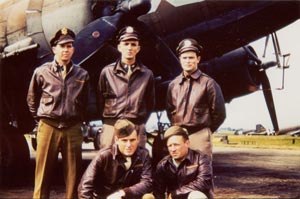
Above:
Don Bolce (kneeling front left) pictured with his D-Day crew on 6th June 1944.
(J. Antrim via D. Bolce)
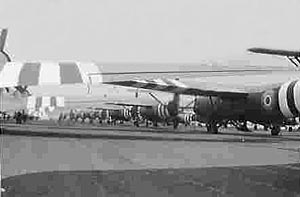
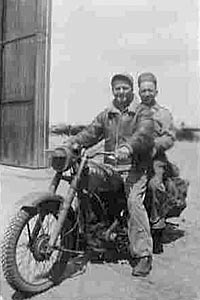
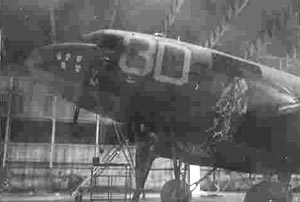
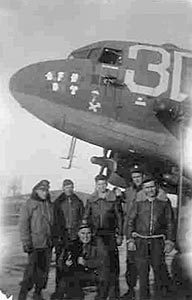
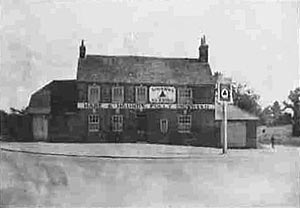
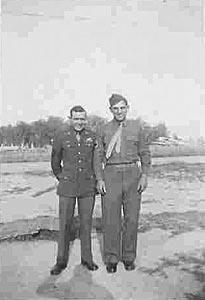
The six photographs shown above were taken by the late Mr Sidney E. Risher who flew as a Crew Chief on 82nd Troop Carrier Squadron C-47 42-100561. The pictures have been reproduced with the kind permission of his son Bobby Risher. Bobby and his two brothers Jimmy and Sidney Jr. are desperate to learn more about their father's wartime career with the 436th TCG. If any reader knew Sidney Risher and can help his sons in any way then please contact them at the following address: Robert.Risher@msjack.ang.af.mil
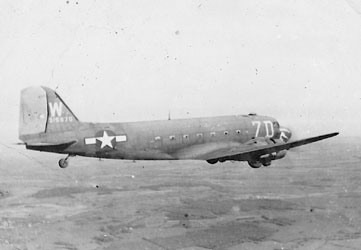
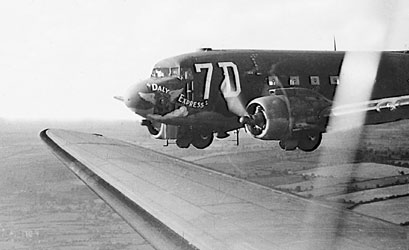
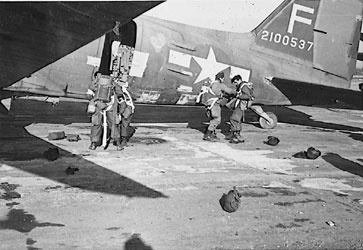
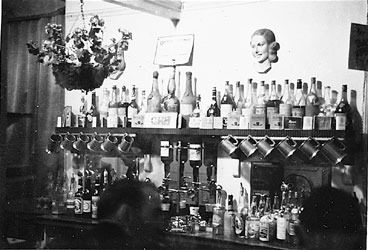
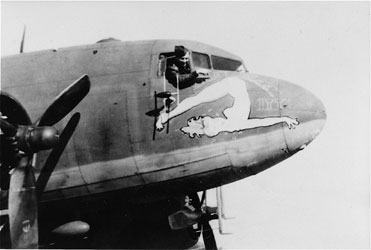
The
five images shown above have been kindly provided by Peter Schmid whose father
was Major Clarence L Schmid, 80th TCS Commander.
Top left: C-47 43-15670. Can any reader provide more details
of this aircraft's nose art? Centre: 'Daly Express'. This plane
was often piloted by the 436th TCG's Commander Col. Adriel Williams.
Top right: Paratroopers preparing to board C-47 42-100537. Bottom
left: A pub bar (possibly the Hare and Hounds). Bottom right:
'Cawn't Miss Itt' Major Schmid's aircraft.
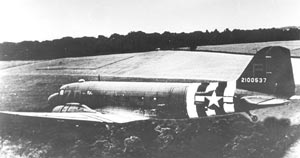
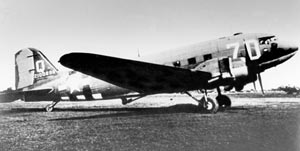
Above
left: An 80th TCS C-47 flies low over the English countryside shortly
after D-Day (Via 'Mac' McKachnie).
Above
right: This 80th TCS aircraft is fitted with glider snatch equipment.
Part of the mechanism can be
seen hanging below the centre part of the fuselage. (Via 'Mac' McKachnie)
'Buzz Buggy'
I have very few wartime photographs of 'Buzz Buggy' or her crew and would like to add more to this web page. Can anybody help please?
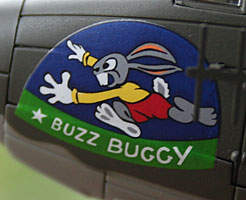
Above: Buzz Buggy's distinctive nose art
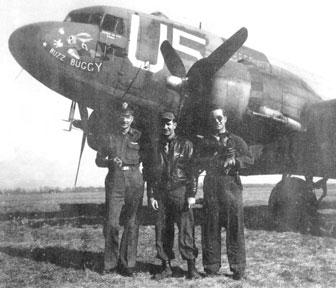
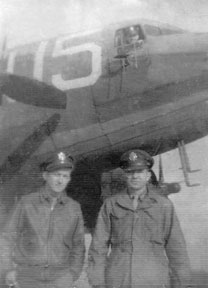
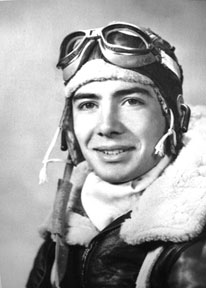
Above left: 'Buzz Buggy' (42-100558) was possibly the 436th TCGs most famous aircraft. She belonged to the 81st TCS and is pictured at Membury. Left to right: Duane Smith (Pilot), Chauncey Clapp (Glider Pilot) and Sam Prisuta (Co-pilot). The dog in Prisuta's arms was called 'Queenie' and remained the crew's mascot until the war's end. Unfortunately 'Queenie' was not allowed to travel back to the USA with 'Buzz Buggy' and was taken in by a French family who looked after the animal until its death in the 1950s. Harold Friedland (not in picture) was 'Buzz Buggy's' radio operator. Above centre: Chauncey Clapp is on the right of this picture and the man standing beside him could be Ellery Bennett. Identity of man in plane is unknown. Chauncey flew a glider into Holland during operation 'Market Garden' and was wounded. Later in the war he qualified as a powered pilot and on a number of occasions flew with Duane Smith in 'Buzz Buggy'. (Both pictures via Ronnie O'Daniel) Above right: A studio picture of Sam Prisuta taken in the US before leaving for England. (Picture kindly supplied by his granddaughter Melanie Prisuta).
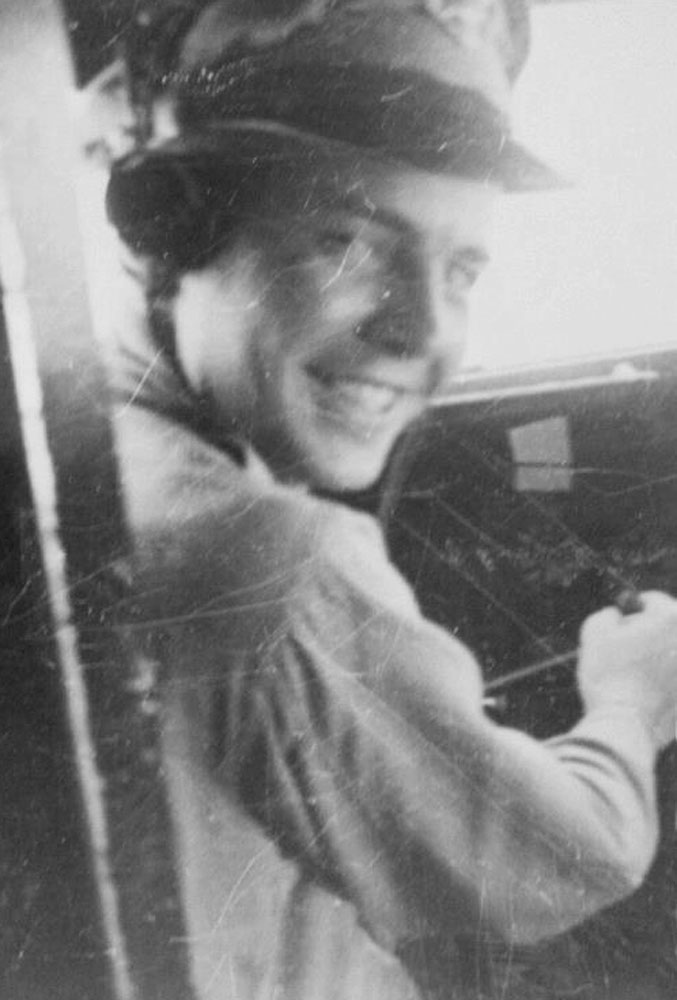
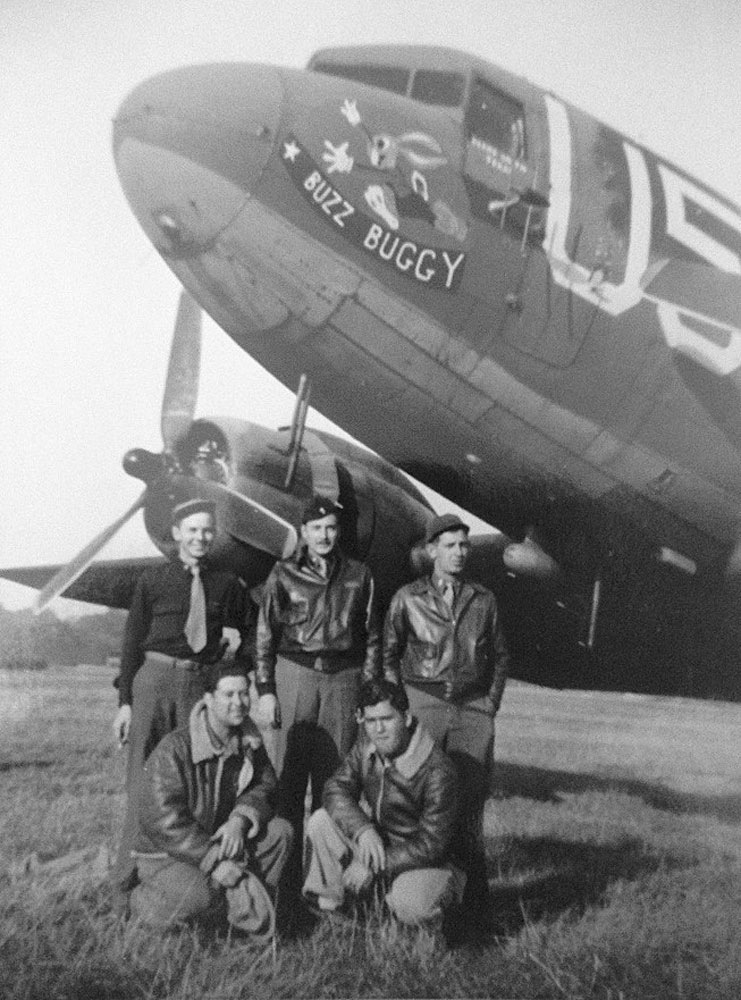
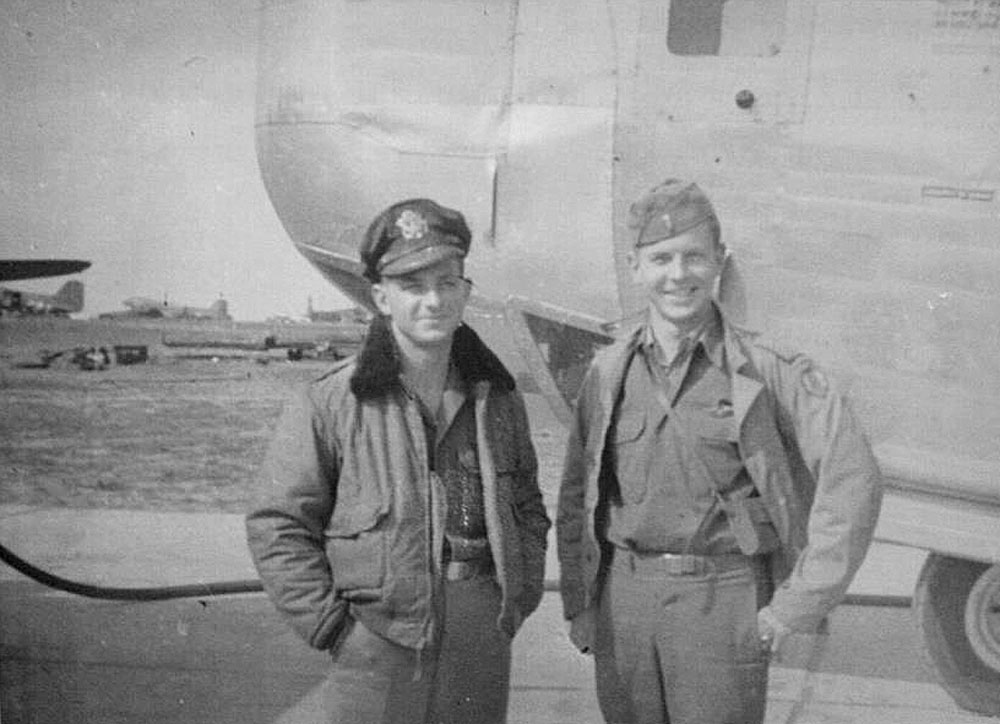
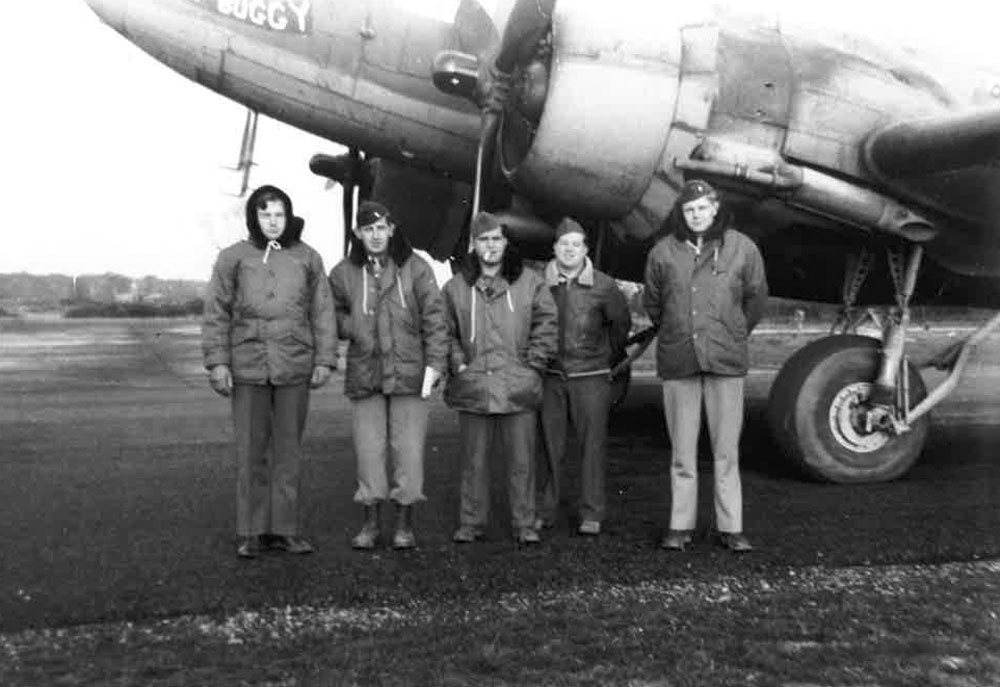

Above
top left: 2nd Lt Robert Dopita at the controls of 'Buzz Buggy'.
Above top centre: Standing back left is Robert Dopita - the other crew
member's names are unknown.
Above top right: Robert Dopita (right) and Chauncey Clapp posing beside
the nose of a C-109 tanker. (all three images via Helen Mayo)
Above bottom left: 'Buzz Buggy's' crew. From left to right; Duane Smith
(Pilot), Eugene Davis, Harold Friedland, Adolph Bogotch (Crew Chief) and Rex
Selbe (Co-pilot and Pilot).
Above bottom right: Buzz Buggy pictured at Membury during the
winter of 1944/45. (Both pictures via Scott D. Selbe)
.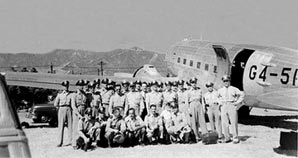
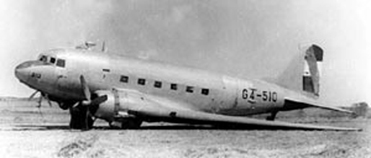
Above
left: Buzz Buggy ended her flying
days with the Uruguay Air Force and this picture was taken in the United States
during
1950, on the day she was handed
over.
Above right: In 1959, following this accident, Buzz Buggy was broken
up. (Both pictures: Ratones de Hangar via Tabaré Ifrán)
Below: During the 1970s the Confederate Air Force painted one of its restored C-47s in the colours of 42-100558 'Buzz Buggy'. (Via Ronnie O'Daniel)
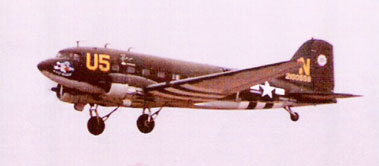
In July part of the group was sent to Votone in Italy to take part in operation 'Dragoon' the invasion of southern France. Following their return in August the 436th's next combat operation was 'Market Garden'.
Operation 'Market Garden' - The airborne invasion of Holland
During the first day of this operation (17th September 1944) the 436th dispatched 90 aircraft carrying the 506th Parachute Infantry Regiment (less its 3rd Battalion) to drop zone 'C' near Zon, Holland. The missions flown by the group during 'Market Garden' proved to be very costly in terms of both men and aircraft lost. Eleven C-47s were destroyed between 17th and 19th September.
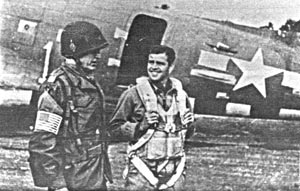

Above left: Membury, 17th September 1944. Col. Robert F. Sink, 506th PIR Commander, and Col. Adriel Williams, 436th TCG Commander, are pictured beside the number '1' aircraft from the 90 plane serial. This C-47 was damaged by flak during the trip but Col. Williams successfully delivered the paratroopers to their drop zone and piloted the aircraft safely back to Membury (Unknown). Above right: Further down the runway paratroopers from the 506th PIR pose beside an aircraft with chalk number 32 (Unknown).
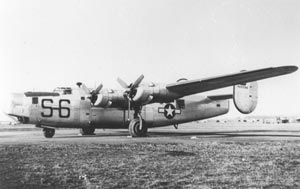
Above: At the beginning of 1945 the 436th TCG received several B-24 aircraft all modified to carry 5,000 gallons of fuel. These planes, re-designated C-109, were used to carry much needed fuel to the Continent. This partucular aircraft (44-49288) served with the 79th TCS (via 'Mac' McKachnie).
On 25th February 1945 the 436th left Membury for Melun in France and by the end of June the station was back under RAF control. Nos. 525 and 187 Squadrons, equipped with Dakotas, then moved in and for a short while transported troops to and from India. These squadrons remained at Membury until October 1946 when the station was closed.
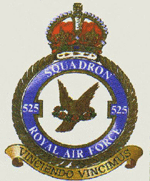 During
February 1945, on his return to England from RAF service with No. 3 Ferry
unit in north Africa, Mr Charles Matthews was posted to 525 Squadron as a
pilot flying Dakotas on the Transport runs to Europe and India. I am indebted
to Mr Matthews for allowing me to reproduce his memories of life at RAF Membury
during that period (see below) and for providing the 525 Squadron crest (left).
During
February 1945, on his return to England from RAF service with No. 3 Ferry
unit in north Africa, Mr Charles Matthews was posted to 525 Squadron as a
pilot flying Dakotas on the Transport runs to Europe and India. I am indebted
to Mr Matthews for allowing me to reproduce his memories of life at RAF Membury
during that period (see below) and for providing the 525 Squadron crest (left).
"My
story starts with my posting back to the UK in December 1945. I had completed
two years on Transport Command in 216 Group, North Africa. Our duties were
flying delivery missions to front line squadrons in Italy. My experience was
with multi-engined aircraft, twins like the Wellington and Marauder and four-engined
Liberators. After 28 days leave with my first Christmas at home for four years,
I was sent to Waterbeach in Cambridgeshire to join 220 Sqdn, Transport troops
in Liberator Conversions. They were not prepared for me to be a Liberator
Captain and generally ignored my presence, I stayed only about a month, twiddling
my thumbs, before being re-posted to 525 Squadron based at RAF Membury, in
Berkshire. I travelled through London and Newbury by train, then on the tiny
branch line to Lambourn, tucked away in the Berkshire downs. A 15-cwt pickup
took me up the winding hill to the squadron office on the base. This was the
very unit that had transported our ferry crews back from England to Algiers
the previous year. During that summer, 1945, No. 525 Squadron was based at
Lyneham, in Wiltshire. At least it was a transport Squadron through and through,
and flying Dakotas and not converted bombers."
"'Vinciendo Vincimus' is the motto of No. 525 Squadron Royal Air Force and
literally translates to ‘We link together to Conquer’. The design is of the
winged foot of Mercury,